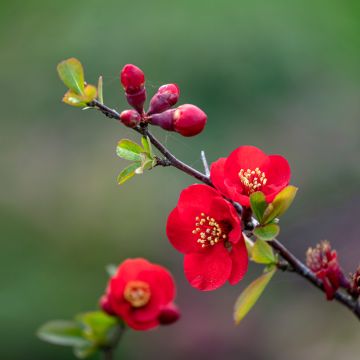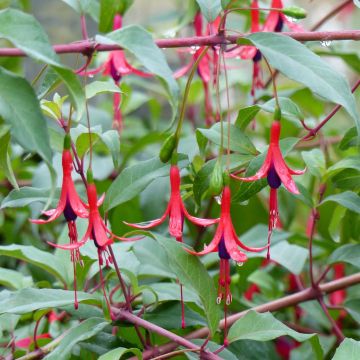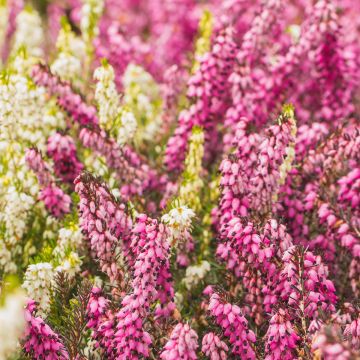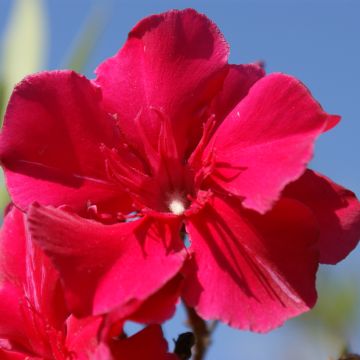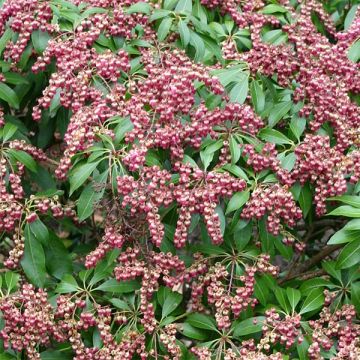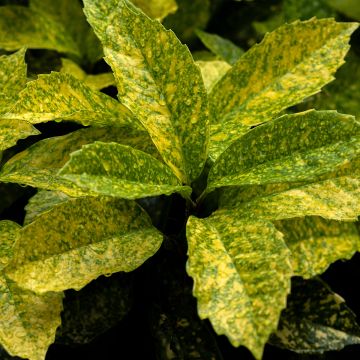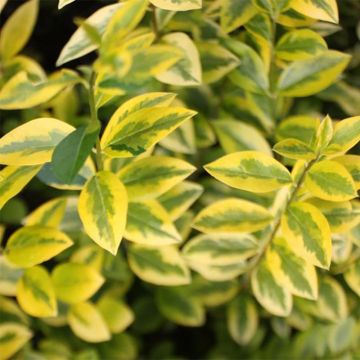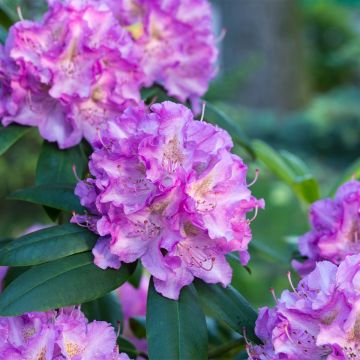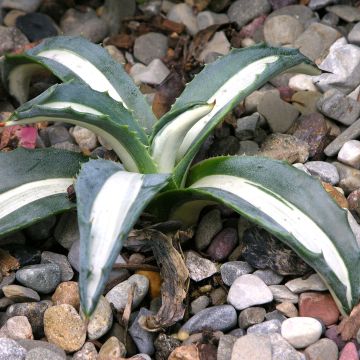

Embothrium coccineum - Arbre de feu du Chili
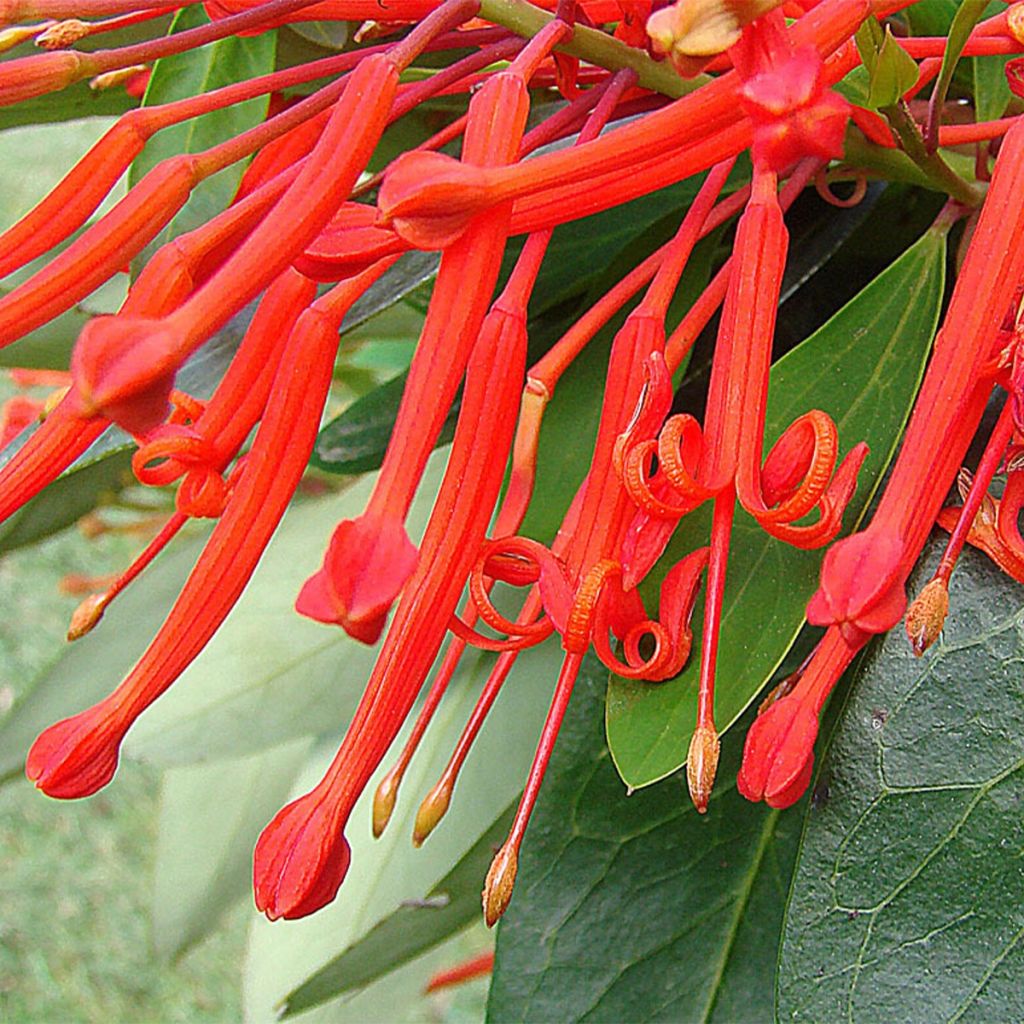

Embothrium coccineum - Arbre de feu du Chili


Embothrium coccineum - Arbre de feu du Chili


Embothrium coccineum - Arbre de feu du Chili
Embothrium coccineum
Embothrium coccineum
Chilean Firebush, Chilean Flame Flower, Chilean Firetree, Flame Tree
Why not try an alternative variety in stock?
View all →This plant carries a 24 months recovery warranty
More information
We guarantee the quality of our plants for a full growing cycle, and will replace at our expense any plant that fails to recover under normal climatic and planting conditions.
From €5.90 for pickup delivery and €6.90 for home delivery
Express home delivery from €8.90.
Does this plant fit my garden?
Set up your Plantfit profile →
Description
Embothrium coccineum is a small tree that bears the name of Chilean Fire Tree. This is certainly due to its flamboyant red flowering, perhaps due to its ability to emerge from the ground after the passage of fire or its origins that border on the extreme south of Tierra del Fuego in Patagonia. In any case, it is a magnificent small tree that should thrive on the coast, with a mild climate and evenly distributed rainfall throughout the year. Its extraordinary flowering in large clusters of shining tubular flowers is perfectly enhanced by intense green foliage, more or less evergreen in winter.
Embothrium coccineum belongs to the protea family, widely represented in South African and Australian floras. This small tree is native to a vast area starting from the southern half of Chile, from the coast to the limit of the mountain zone, to the extreme south of Tierra del Fuego in Patagonia, sometimes up to 2,000 m (6561 feet 8 inches) above sea level. Capable of adapting to fairly diverse habitats, this species is however confined to poor, non-chalky, sandy or peaty and well-drained soil, as well as rather humid and mild climates.
This small tree has a bushy and at the same time upright and spreading, well-branched habit. Of moderately fast growth, it will reach an average height of 5.5 m (18 ft) with a spread of 2.20 m. The sturdy trunk has a grey bark covered with lenticels which give the appearance of horizontal stripes. The upright, fairly flexible branches bear glossy green foliage. Each leaf measures up to 12 cm (4.7 in) in length and 6 cm (2.4 in) in width with smooth, slightly wavy margins and a clear central vein. Evergreen in mild climates, the leaves fall from -7°C (19.4 °F). The plant dies below -10/-12°C (14/10.4 °F).
Flowering takes place in May-June. Concentrated towards the top of the tree, it appears in the form of clusters in the axils of the leaves. Each of these clusters, called corymbs, is formed of long tubular flowers measuring 3 to 5 cm (1.2 to 2 in) in length, borne on long peduncles. The flower consists of a tube ending in 4 lobes that twist at full bloom to release the pistil surrounded by 4 short and partially fused stamens. These flowers are scarlet red, sometimes tinged with yellow at their tips and highly nectar-rich. They attract certain species of hummingbirds in Chile that will come to pollinate them.
Particularly well-suited to mild coastal climates, some beautiful specimens of Embothrium coccineum can be admired where you find the mildness of winter and the summer humidity that allow it to flourish. This small tree deserves a place as a standalone in a garden of modest size, but can also create a sensation in a large shrub border if well accompanied: it will form an exotic and sumptuous association with evergreen ceanothus. Its shining flowering will also be enhanced by the silver foliage of eucalyptus or certain willows. In an exotic garden, it can be paired with Canary viper's bugloss, Aloe aristata, Callistemon and other Leptospermum.
Report an error about the product description
Embothrium coccineum in pictures




Plant habit
Flowering
Foliage
Botanical data
Embothrium
coccineum
Proteaceae
Chilean Firebush, Chilean Flame Flower, Chilean Firetree, Flame Tree
South America
Other Shrubs A to Z
Planting and care
Embothrium coccineum is best planted in spring, after the last frosts. It requires deep, moist soil with an acidic to neutral pH, sandy, loamy, poor, and well-drained. The presence of limestone in the soil causes leaf yellowing, chlorosis, which weakens the bush until it eventually dies. This disease can be corrected by regularly applying iron in chelated form. In regions where the soil and subsoil are limestone, it is advisable to dig a large hole of 60-80 cm (23.6-31.5 in) in all directions, and fill it with ericaceous soil and sand. Growing in a container allows for better control of the growing medium and the plant can be stored frost-free in a borderline hardiness zone (up to -12°C (10.4 °F) at its peak for a well-established plant). In a container, use lightweight, well-drained soil that remains moist. We recommend the following mixture: 60% pine bark, 20% coarse river sand, 10% fine river sand, and 10% clay soil, for its water retaining capacity. The pH should be less than or equal to 6.5. This tree dislikes hot and dry summers, so plant it in semi-shade in the undergrowth if summers are hot in your region, but in an open location everywhere else. Choose a place sheltered from dry and cold winds. Proximity to a water source is appreciated, provided that the roots are not waterlogged in winter.
Monitor watering during the first two summers and in pots throughout the cultivation. In the ground, it appreciates having a thick layer of mulch. Use wood chips or lawn clippings. For feeding, it is advisable to use a fertiliser very low in phosphorus, otherwise the resistance of the bush to drought will decrease by destroying the dense root hairs that develop just below the surface of the soil. A 18-2-10 N-P-K type fertiliser is well-suited.
Pruning:
There is no need to prune the Chilean fire tree, just remove dead wood.
Insects and diseases:
Mites, especially red spiders, infest the foliage when the air is too dry. In hot and dry weather, spray the foliage in the evening.
Planting period
Intended location
Care
This item has not been reviewed yet - be the first to leave a review about it.
Evergreen shrubs
Haven't found what you were looking for?
Hardiness is the lowest winter temperature a plant can endure without suffering serious damage or even dying. However, hardiness is affected by location (a sheltered area, such as a patio), protection (winter cover) and soil type (hardiness is improved by well-drained soil).

Photo Sharing Terms & Conditions
In order to encourage gardeners to interact and share their experiences, Promesse de fleurs offers various media enabling content to be uploaded onto its Site - in particular via the ‘Photo sharing’ module.
The User agrees to refrain from:
- Posting any content that is illegal, prejudicial, insulting, racist, inciteful to hatred, revisionist, contrary to public decency, that infringes on privacy or on the privacy rights of third parties, in particular the publicity rights of persons and goods, intellectual property rights, or the right to privacy.
- Submitting content on behalf of a third party;
- Impersonate the identity of a third party and/or publish any personal information about a third party;
In general, the User undertakes to refrain from any unethical behaviour.
All Content (in particular text, comments, files, images, photos, videos, creative works, etc.), which may be subject to property or intellectual property rights, image or other private rights, shall remain the property of the User, subject to the limited rights granted by the terms of the licence granted by Promesse de fleurs as stated below. Users are at liberty to publish or not to publish such Content on the Site, notably via the ‘Photo Sharing’ facility, and accept that this Content shall be made public and freely accessible, notably on the Internet.
Users further acknowledge, undertake to have ,and guarantee that they hold all necessary rights and permissions to publish such material on the Site, in particular with regard to the legislation in force pertaining to any privacy, property, intellectual property, image, or contractual rights, or rights of any other nature. By publishing such Content on the Site, Users acknowledge accepting full liability as publishers of the Content within the meaning of the law, and grant Promesse de fleurs, free of charge, an inclusive, worldwide licence for the said Content for the entire duration of its publication, including all reproduction, representation, up/downloading, displaying, performing, transmission, and storage rights.
Users also grant permission for their name to be linked to the Content and accept that this link may not always be made available.
By engaging in posting material, Users consent to their Content becoming automatically accessible on the Internet, in particular on other sites and/or blogs and/or web pages of the Promesse de fleurs site, including in particular social pages and the Promesse de fleurs catalogue.
Users may secure the removal of entrusted content free of charge by issuing a simple request via our contact form.
The flowering period indicated on our website applies to countries and regions located in USDA zone 8 (France, the United Kingdom, Ireland, the Netherlands, etc.)
It will vary according to where you live:
- In zones 9 to 10 (Italy, Spain, Greece, etc.), flowering will occur about 2 to 4 weeks earlier.
- In zones 6 to 7 (Germany, Poland, Slovenia, and lower mountainous regions), flowering will be delayed by 2 to 3 weeks.
- In zone 5 (Central Europe, Scandinavia), blooming will be delayed by 3 to 5 weeks.
In temperate climates, pruning of spring-flowering shrubs (forsythia, spireas, etc.) should be done just after flowering.
Pruning of summer-flowering shrubs (Indian Lilac, Perovskia, etc.) can be done in winter or spring.
In cold regions as well as with frost-sensitive plants, avoid pruning too early when severe frosts may still occur.
The planting period indicated on our website applies to countries and regions located in USDA zone 8 (France, United Kingdom, Ireland, Netherlands).
It will vary according to where you live:
- In Mediterranean zones (Marseille, Madrid, Milan, etc.), autumn and winter are the best planting periods.
- In continental zones (Strasbourg, Munich, Vienna, etc.), delay planting by 2 to 3 weeks in spring and bring it forward by 2 to 4 weeks in autumn.
- In mountainous regions (the Alps, Pyrenees, Carpathians, etc.), it is best to plant in late spring (May-June) or late summer (August-September).
The harvesting period indicated on our website applies to countries and regions in USDA zone 8 (France, England, Ireland, the Netherlands).
In colder areas (Scandinavia, Poland, Austria...) fruit and vegetable harvests are likely to be delayed by 3-4 weeks.
In warmer areas (Italy, Spain, Greece, etc.), harvesting will probably take place earlier, depending on weather conditions.
The sowing periods indicated on our website apply to countries and regions within USDA Zone 8 (France, UK, Ireland, Netherlands).
In colder areas (Scandinavia, Poland, Austria...), delay any outdoor sowing by 3-4 weeks, or sow under glass.
In warmer climes (Italy, Spain, Greece, etc.), bring outdoor sowing forward by a few weeks.

































